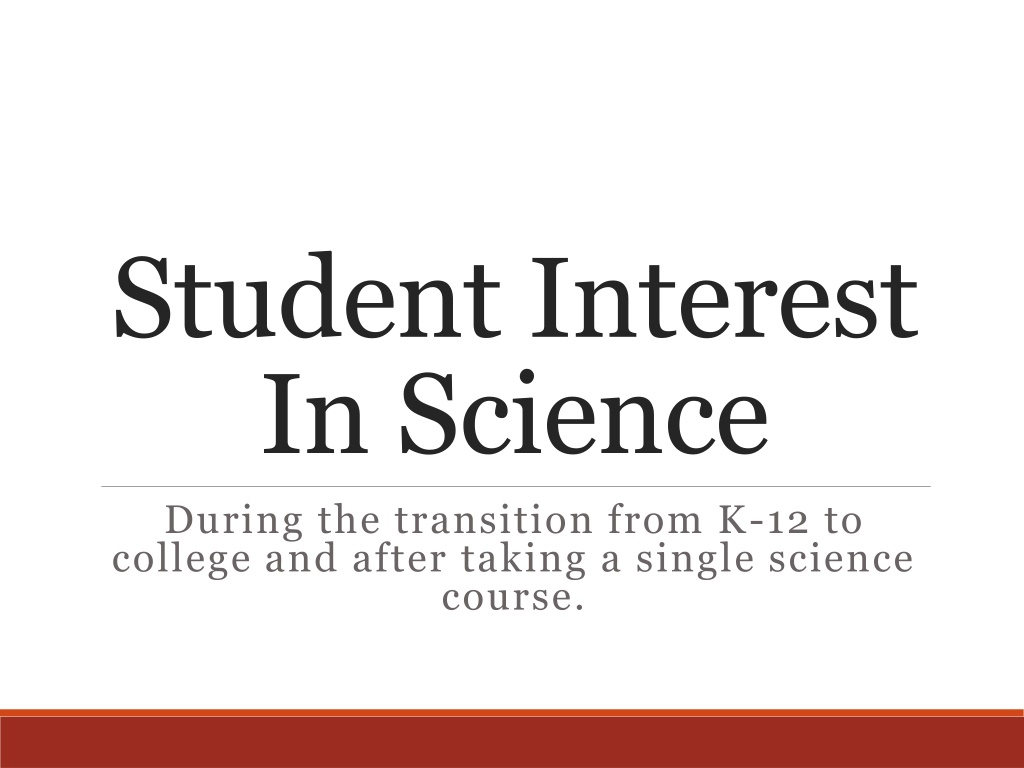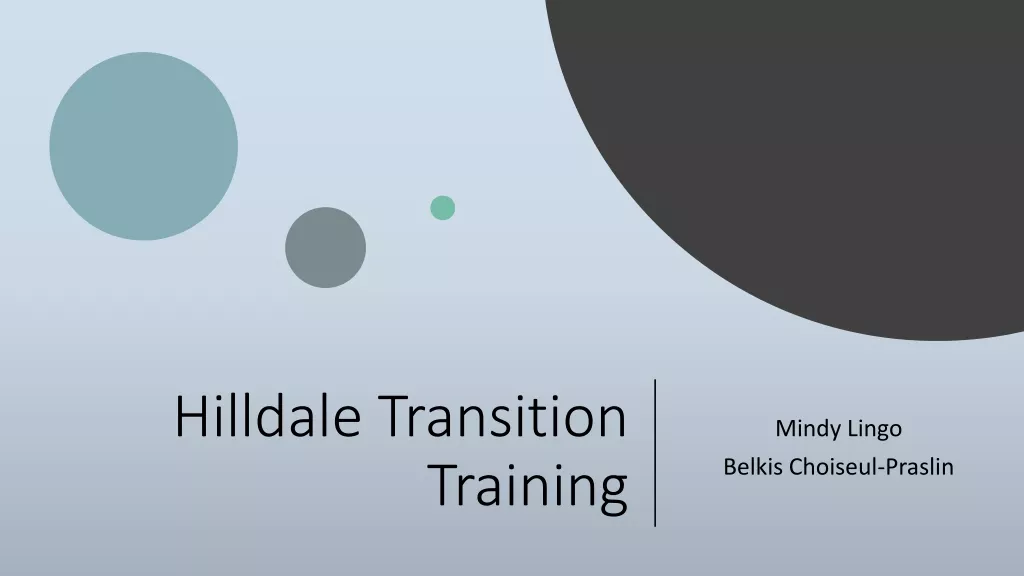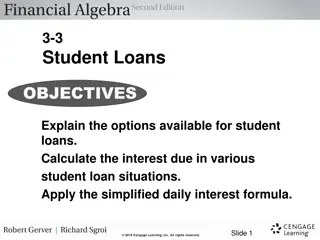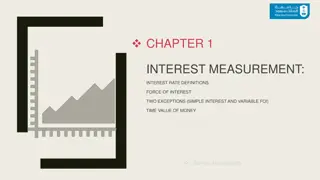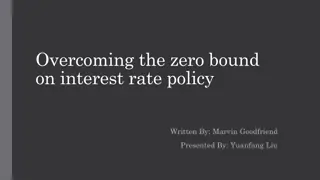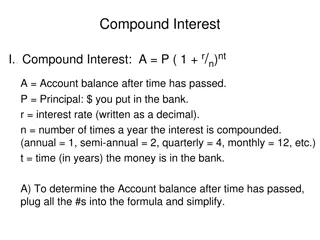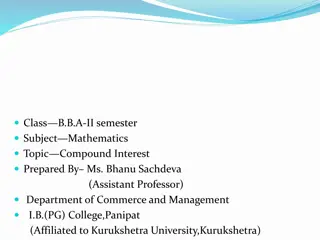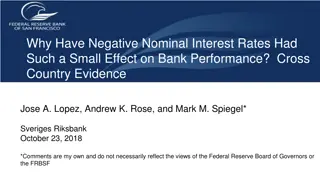Student Interest in Science Transition from K-12 to College
Exploring student interest in science during the transition from K-12 to college and after taking a single science course. The study includes insights on students' interactions with science inside and outside the classroom, enjoyment of science classes, and differences based on gender and future majors. Surveys were conducted among college students in the Oklahoma City Metro Area.
Download Presentation

Please find below an Image/Link to download the presentation.
The content on the website is provided AS IS for your information and personal use only. It may not be sold, licensed, or shared on other websites without obtaining consent from the author. Download presentation by click this link. If you encounter any issues during the download, it is possible that the publisher has removed the file from their server.
E N D
Presentation Transcript
Student Interest In Science During the transition from K-12 to college and after taking a single science course.
David E. Reed University of Wisconsin-Madison Emily C. Kaplita Dickinson College David A. McKenzie Emporia State University Rachel Jones University of Science and Arts of Oklahoma Mark Lyford University of Wyoming Student Interest In Science During the transition from K-12 to college and after taking a single science course.
Methods Student surveys administered to ~350 college students at three different schools in the Oklahoma City Metro Area Simple yes/no, ranking and Likert scale questions
Part One Before college, what are students like?
Before starting college, did you? Every student has taken a science course
Before starting college, did you? Every student has taken a science course Fewer students interact with science outside of the classroom
Before starting college, did you? Every student has taken a science course Fewer students interact with science outside of the classroom Females interact with science socially
Before starting college, did you enjoy? Overall, students enjoy science classes
Before starting college, did you enjoy? Overall, students enjoy science classes Females enjoy science socially, males enjoy science alone
Before starting college, did you enjoy? Overall, students enjoy science classes Females enjoy science socially, males enjoy science alone Future STEM majors enjoy science more than future non-STEM majors
Before starting college, what percent of the time did you have positive experiences? Normal distribution of responses Females and STEM majors like science slightly more than Males and non- STEM majors
Before starting college, what percent of the time did you have positive experiences? Bi-modal responses when asked about liking science outside of the classroom Females like science more socially, males like science more alone
Part One Female students enjoy science socially more than males Male students enjoy science alone more than females Future STEM vs non-STEM students show divergent views early.
Part Two During the K12-to-college transition, what are students like?
Before starting College, did you enjoy? Student Interest In Science Content 100 Interest in science increases as students age All Students Male Female STEM Non-STEM Non Significant Pair 80 Percent Of Students 60 40 20 0 Elementary School Middle School Early High School Late High School College Student Interest In Science As A Process 100 All Students Male Female STEM Non-STEM Non Significant Pair 80 Percent Of Students 60 40 20 0 Elementary School Middle School Early High School Late High School College
Before starting College, did you enjoy? Student Interest In Science Content 100 Interest in science increases as students age All Students Male Female STEM Non-STEM Non Significant Pair 80 Percent Of Students 60 40 20 Females are more interested in science at a younger age 0 Elementary School Middle School Early High School Late High School College Student Interest In Science As A Process 100 All Students Male Female STEM Non-STEM Non Significant Pair 80 Percent Of Students 60 40 20 0 Elementary School Middle School Early High School Late High School College
Before starting College, did you enjoy? Student Interest In Science Content 100 Interest in science increases as students age All Students Male Female STEM Non-STEM Non Significant Pair 80 Percent Of Students 60 40 20 Females are more interested in science at a younger age 0 Elementary School Middle School Early High School Late High School College Student Interest In Science As A Process 100 Male interest in science increases at a faster rate All Students Male Female STEM Non-STEM Non Significant Pair 80 Percent Of Students 60 40 20 0 Elementary School Middle School Early High School Late High School College
Part Two The traditional gender gap idea is reversed at young ages and at the same time, future non-STEM students have higher interest in science than future STEM students
Part Three After taking science classes at college, what are students like?
Current interest in science? Students are interested in science!
Current student interest in aspects of science Overall, large negative interest in quantifiable aspects of science (Math and Stats)
Current student interest in aspects of science Overall, large negative interest in quantifiable aspects of science (Math and Stats) Females are less interested in Math and Stats
Current student interest in aspects of science Overall, large negative interest in quantifiable aspects of science (Math and Stats) Females are less interested in Math and Stats Females are more interested in interacting with scientists
Current student interest in aspects of science Nearly every aspect of science shows a difference between STEM and non- STEM majors
Current student interest in aspects of science Nearly every aspect of science shows a difference between STEM and non- STEM majors Particularly large difference in lab work
After taking one science course for non-majors: Note: Results from a different study After taking just one science class, non- STEM majors show an increase in their interest in science Science Courses for Nonscience Majors: How Much Impact Can One Class Make? David Reed and Mark Lyford, Bulletin of the American Meteorological Society 2014 95:8, 1209-1212
Part Three The math and science components of science are not enjoyable for students But, one science class makes a difference in their opinions of science
Take Home Points Science is collaborative in nature and teaching thusly would help keep females interested in science Everyone struggles with math and stats Our collective efforts in teaching non-STEM students is meaningful!
